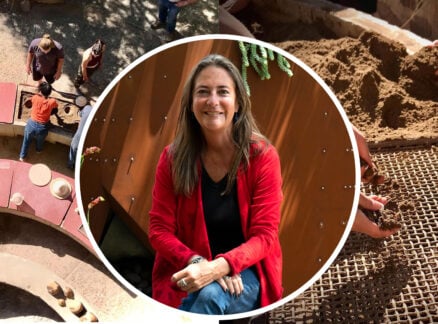
July 5, 2018
NatureStructure Exhibition Shows How Infrastructure and Nature Can Work Together
On view at the BSA Space in Boston, NatureStructure features a bridge that doubles as bat habitat, plans for 3D-printed reefs, a floodwater-absorbing parking lot, and more.

In 1836, Boston’s own Ralph Waldo Emerson wrote, poetically and presciently: “Nature is already, in its forms and tendencies, describing its own design. Let us interrogate the great apparition that shines so peacefully around us.”
Many generations later, the Boston Society of Architects is mounting NatureStructure, an exhibition showcasing large infrastructure projects that not only are designed in harmony with the environment but—to use the Norwegian expression Spille på lag med naturen—“play on the same team as nature.”
Curator Scott Burnham believes these projects go beyond what are considered sustainable design practices in the United States today. “LEED is great, but with it you’re just trying to do no damage,” Burnham explains. “What this show is about is restoring, regenerating, and healing the damage that has already been done.”
The exhibition features a comprehensive range of projects, including a “bat bridge” in the Netherlands, whose underside is designed to provide roosting and nesting space for several bat species; a bridge in Geneva that uses algae to transform CO2 from passing cars into a nutrient-rich food source; and 3D-printed reefs, tiles, and seawalls by Reef Design Lab in Australia, aimed at replenishing marine life. Another highlight of the show is “Pop Up,” an urban parking garage by Danish architecture firm Third Nature that addresses urban flooding, parking, and lack of green space. As heavy rains fall, storm water fills an underground reservoir, raising (or “popping up”) a parking structure into the viewable cityscape.
Burnham, a writer and urban strategist responsible for similar environmental and resource-focused design initiatives in over a dozen cities worldwide, sees the current U.S. focus on rebuilding as an opportunity. “There are so many innovative things we can do when building highways and bridges,” he says. “We need to get really excited about infrastructure again.”
You may also enjoy “New Queens Park Restores Wetlands That Double as Resiliency Infrastructure.”






